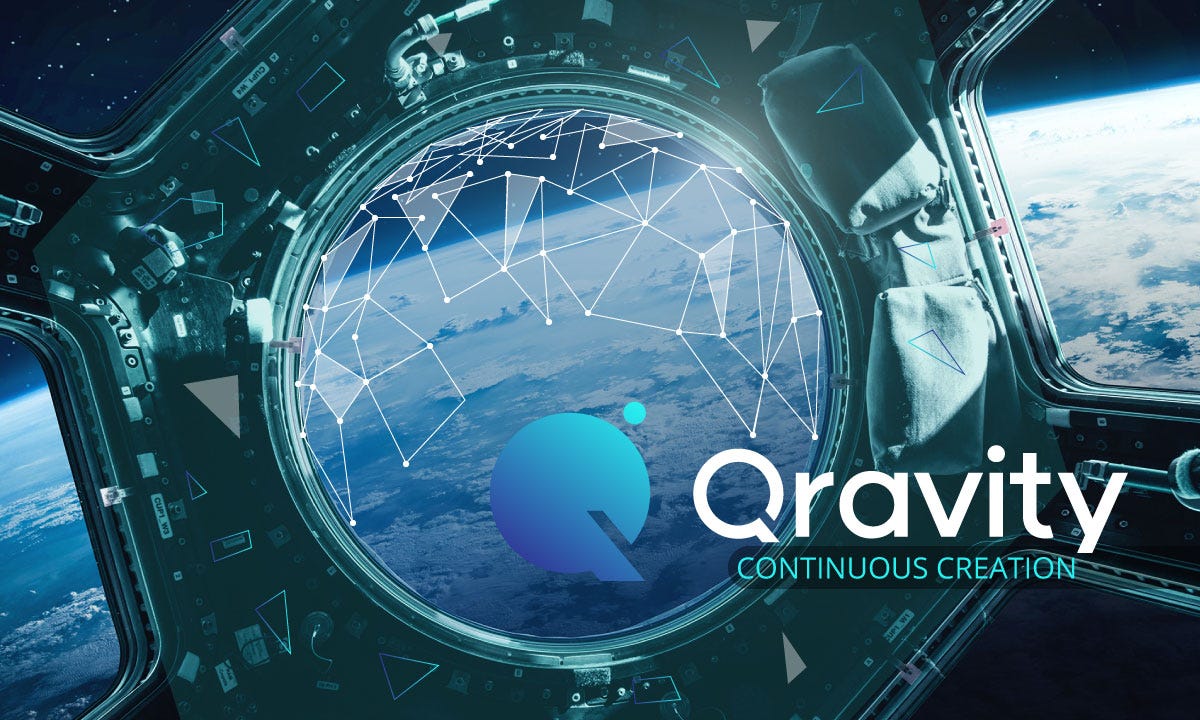Qravity : Great tech for great ideas: how blockchain benefits Qravity project founders

Qravity is a digital entertainment production and distribution platform where decentralized creative teams get royalties for making movies, games, music, and more.
Qravity provides a space for creative visionaries to collectively develop original monetizable digital content, including movies, music, games, e-books, and applications. The platform uses virtual tokens on the Ethereum blockchain to track digital content creation, distribute project stakes among creative team members, and bring Qravity-produced content directly to market. Blockchain technology makes the platform’s transactions transparent in terms of revenue, product distribution, and profit sharing.
How Qravity Works
The Qravity platform is a decentralized digital content development and distribution platform with integrated project management tools, including asset production and approval, file sharing, and messaging for community and team communication. Project team members use these features according to their role.
For example, founders can use the platform to direct their creative teams, while creators can track their progress and stakes. Upon project completion, Qravity brings the content to market, making it consumable through its platform, selling rights to distributors, and selling directly through third-party digital marketplaces like app stores and streaming services.
Qravity Blockchain Technology
This section of the whitepaper outlines the functionality of smart contracts to give tech-focused readers insight into how Qravity plans to use them in greater detail.
QCO and QPT
The platform uses tokens called Qravity QCO (QCO) for all monetary transactions. Anyone can buy these tokens with ETH during the Qravity token sale. After the sale, QCO will be available on third-party exchanges.
Smart Contracts
Qravity smart contracts contain several components, including QCO, QPT, and account, project, and task data. In order to continually improve the platform through upgrades and feature additions, smart contracts (except the QCO token) must be partially upgradable. Qravity is constantly monitoring future scaling solutions for possible integration into the Qravity ecosystem so that it can harness more advanced blockchain technologies.
Smart Tasks
Tasks within the smart contract will be instantiated using a structure to hold the tasks of that project. The structure will be held in a mapping that organizes tasks by name or number. This task structure will be a part of the project contract that tracks the QPT earned by everyone, along with the total amount of QPT for the entire project.

Qravity Project Flow
Project Tasks
The founder receives a percentage of their completed project’s total QPT. They set this stake with the Project Share Distribution slider in the project management dashboard; this slider must be set during the initial project setup, and remains locked upon project publication. The founder can set their stake as less than the 10% default, thereby increasing stakes, and incentive, for content creators.
QPT value will be based on the approximate hours expected to complete a task and/or task complexity. For example, if 1 QPT = 15 minutes, a task that is estimated to take 1 hour to complete would be assigned 4 QPT. Five 1-hour tasks would then equal a total of 20 QPT. Projects have a cumulative total of QPT; as tasks are added, Qravity updates and displays the total amount of tokens created over the project’s duration.

Business Model
The platform generates revenue through its shares in ownership of each project on a percentage basis, and by licensing content to consumers. For every project, Qravity’s stake is fixed at 10%. To earn this percentage, the platform offers
- Marketing of Qravity content
- Customer support
- Mentorship
- Bandwidth and storage
- Transparent payment
- Content distribution
The 10% stake for new projects may increase or decrease dynamically for future project founders according to the health of the platform’s economy. The rate set during initial project setup is permanent.
The following diagram shows the flow of QCO, or revenue, in the platform. For Wholesaler Content Distributors (WCD), Qravity can manually create paper contracts, convert fiat payments into QCO through exchanges on behalf of the WCDs, and inject that QCO into the platform until WCDs start using B2B blockchain transactions regularly.

Crowdsale and Tokens
QCO will be sold to early investors and adopters during a crowdsale (token sale) that will run from August to Q4 2018. The token will be used for multiple purposes – such as accessing digital content and creating projects within the platform.

QCO Distribution
- Token sale 50%
- Team members & advisors 22%
- Reserve 14%
- OTC token purchases 2%
- Community rewards 2%
- QCO Boost 10%
- Community rewards 2%
ETH Contribution Allocation
- Marketing Qravity projects 37%
- Marketing Qravity platform 19%
- Operations, global offices, & CS 18%
- Ongoing platform development 14%
- Community events, workshops 9%
- Legal & financial counsel 3%
Roadmap

For More Information
Website: https://qravity.com/en/
Twitter: https://twitter.com/qravitycom
Facebook: https://www.facebook.com/QravityCom/
Medium: https://medium.com/qravity
Telegram: https://t.me/QravityCom
Telegram: https://t.me/qravityqa
My Bitcointalk Address : https://bitcointalk.org/index.php?action=profile;u=2067513

Komentar
Posting Komentar